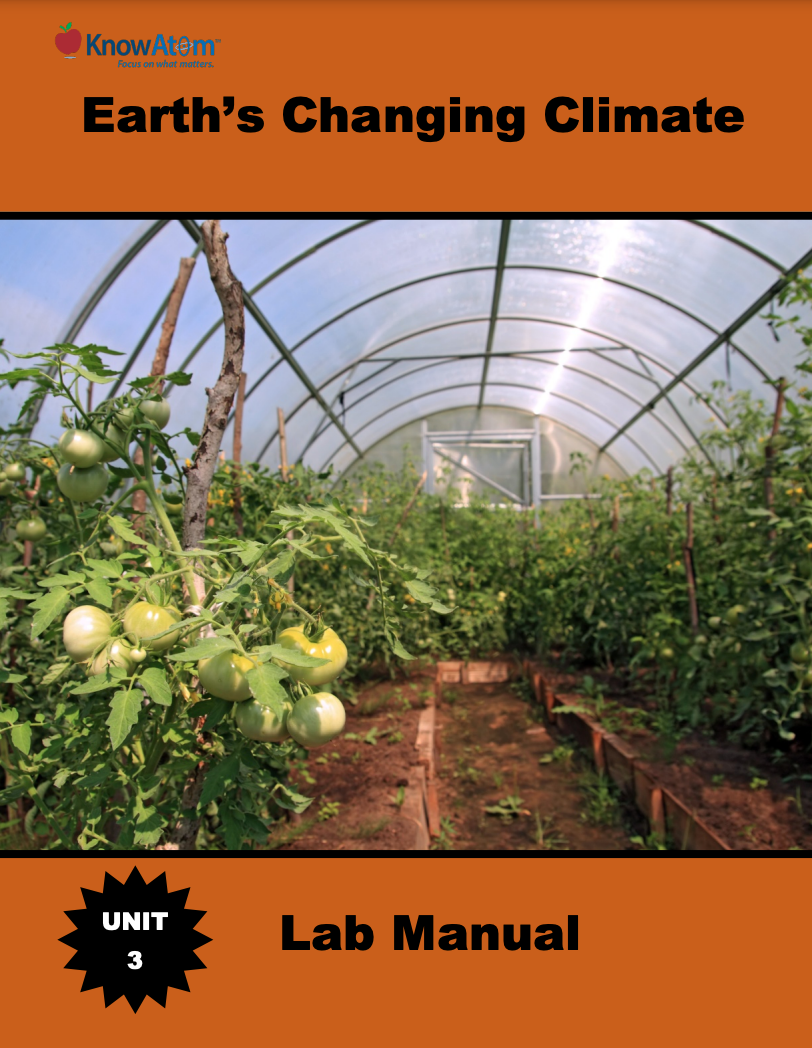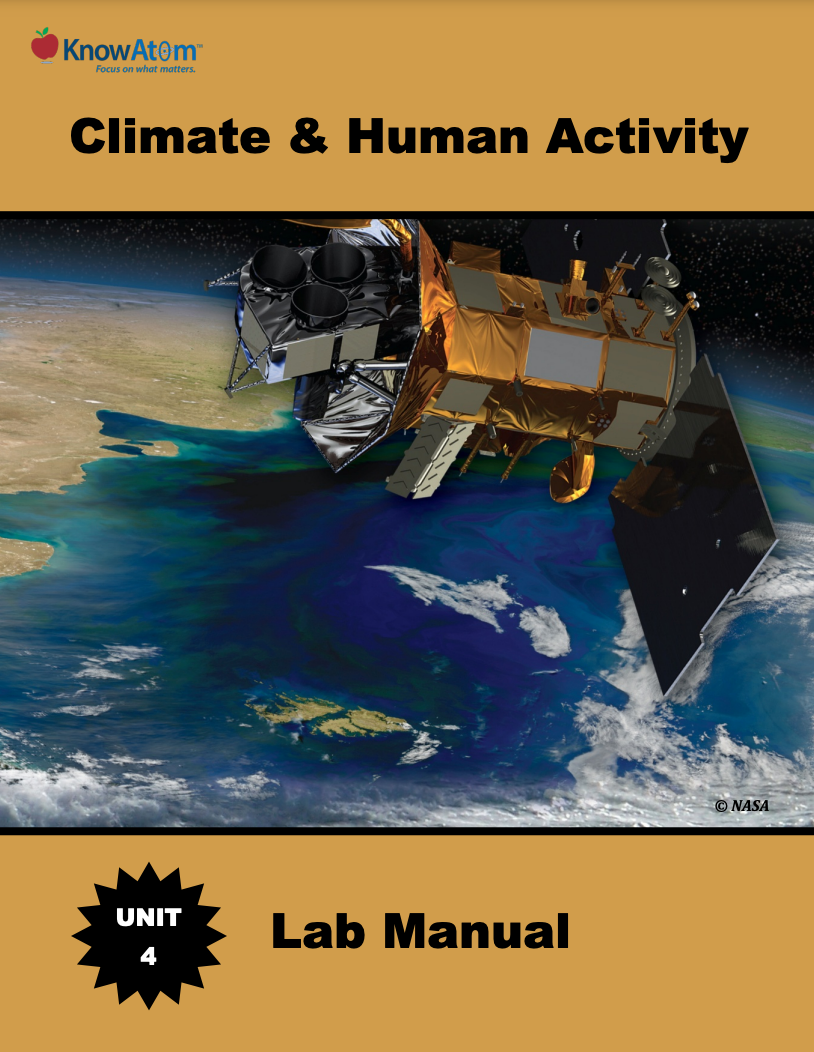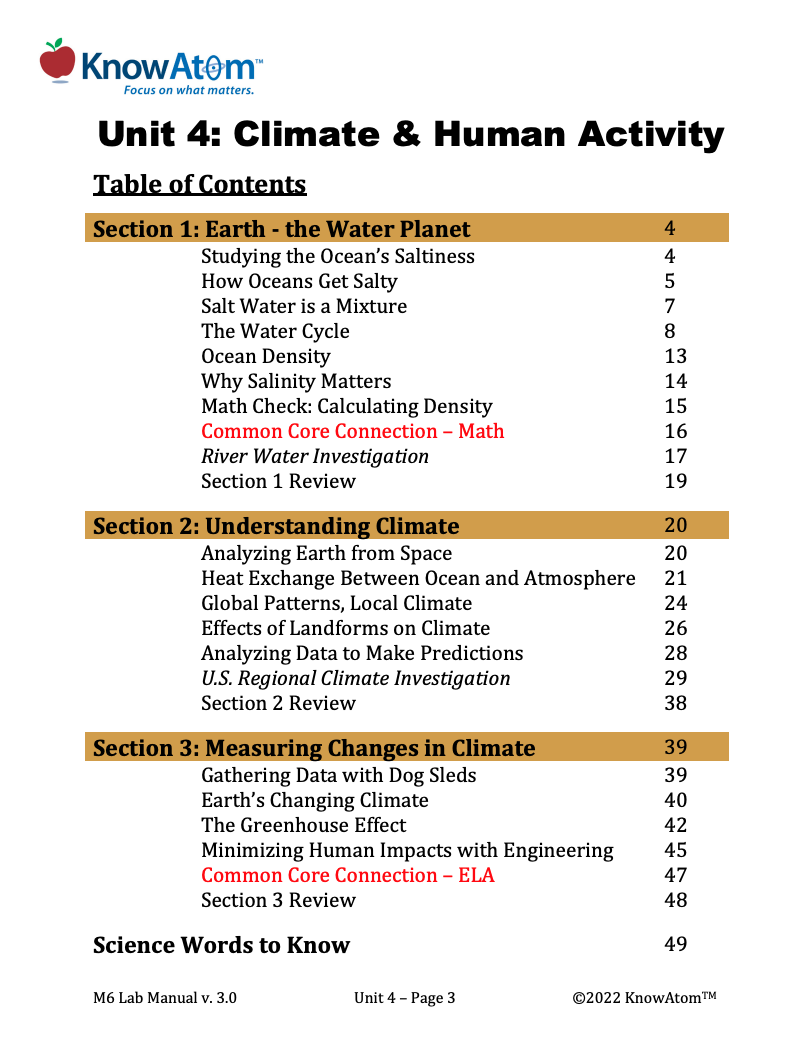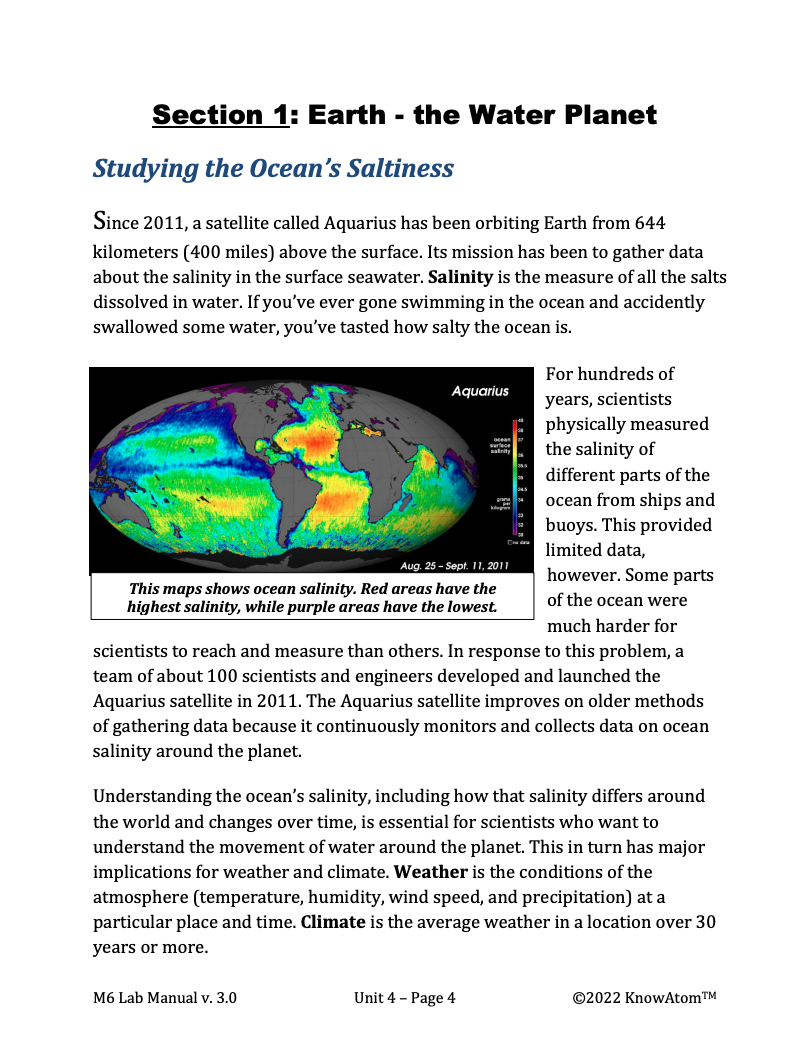
In this unit, students analyze the phenomenon of our sun as the primary source of energy on Earth. In this lesson, students explore how the sun’s uneven heating of the planet drives weather phenomena and climate phenomena, which result from complex interactions within Earth’s systems. This page is an extract from parts of this lesson.

In this unit, students evaluate how Earth is heated unevenly by investigating how the angle that the sun’s rays hit Earth affects temperatures at different locations. In this lesson, students use their scientific knowledge of phenomena related to global warming and climate to engineer a model greenhouse that reaches a specific temperature. This pages provides a snapshot of this lesson.
.png)
In this unit, students focus on the phenomena of Earth’s ice as they model how glaciers shape Earth’s surface. In this lesson, they investigate how scientists use ice cores to reconstruct Earth’s past climates and environments. This page is a high-level extract of this lesson.
.png)
In this unit, students explore the science phenomena of Earth systems as they interact. Students do this by discovering the importance of water for life on Earth. In this lesson, students figure out groundwater flow by exploring the porosity and permeability of different Earth materials. This page is a high-level extract of this lesson.

In this unit, students explore the science phenomena of matter, energy, and heat transfer to explore weather and climate. In this lesson they investigate how the sun powers the global water cycle, which in turn has very local impacts that affect regional climates around the world. This page is a high-level extract of this lesson.

In this unit, students investigate the relationship between the water cycle, ocean salinity, weather, and climate. In this lesson, students explore ocean salinity and analyze how ocean density is related to its molecular structure. This page highlights key components of this lesson.

In this unit, students build on their scientific knowledge about matter, energy, and heat transfer to explore science phenomena related to weather and climate. They investigate how the sun powers the global water cycle, which in turn has very local impacts that affect the phenomena of regional climates around the world. This page showcases all the parts of this lesson.

In this unit, students build on their scientific knowledge about matter, energy, and heat transfer to explore the phenomena of weather and climate. They investigate how the sun powers the global water cycle, which in turn has very local impacts that affect the phenomena of regional climates around the world. They then use that knowledge to figure out and design a technology that solves the problem of drought-related water shortages.
Standards citation: NGSS Lead States. 2013. Next Generation Science Standards: For States, By States. Washington, DC: The National Academies Press. Neither WestEd nor the lead states and partners that developed the Next Generation Science Standards were involved in the production of this product, and do not endorse it.
